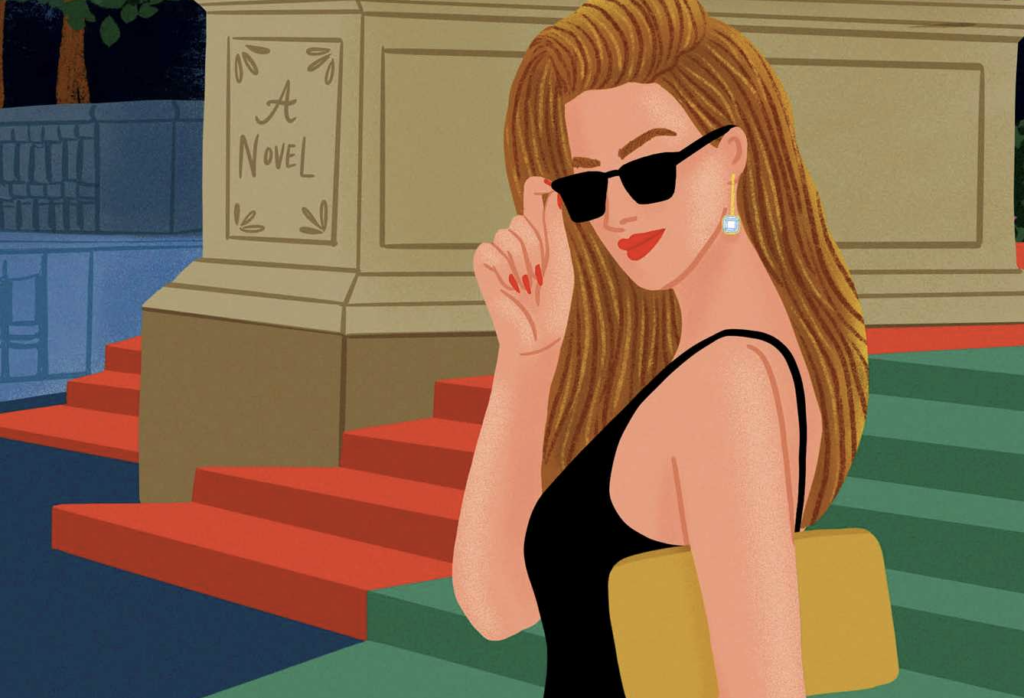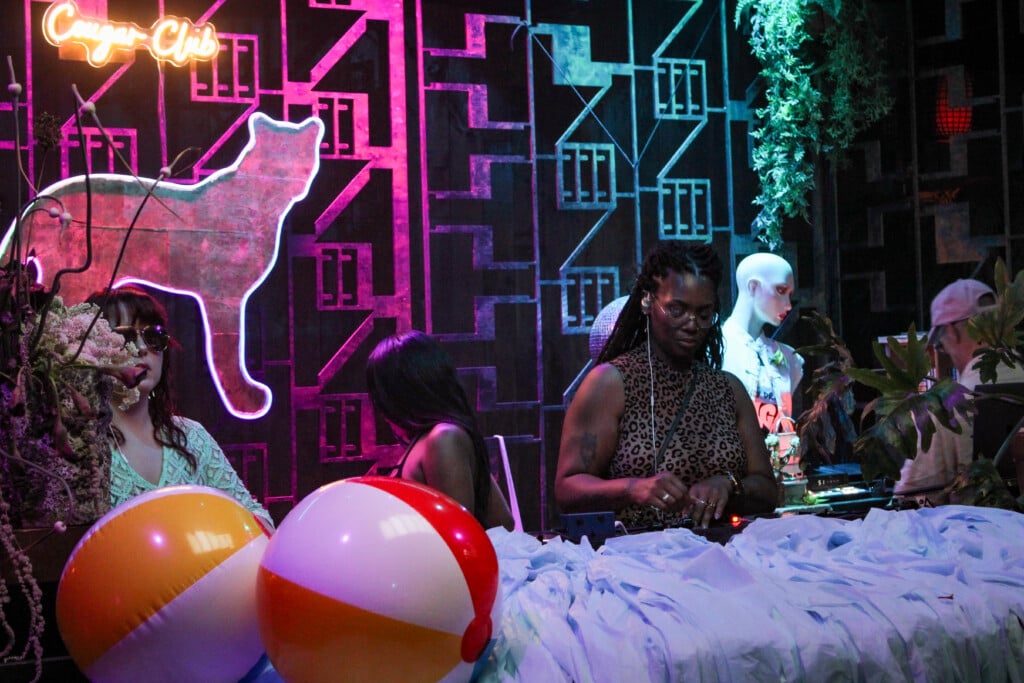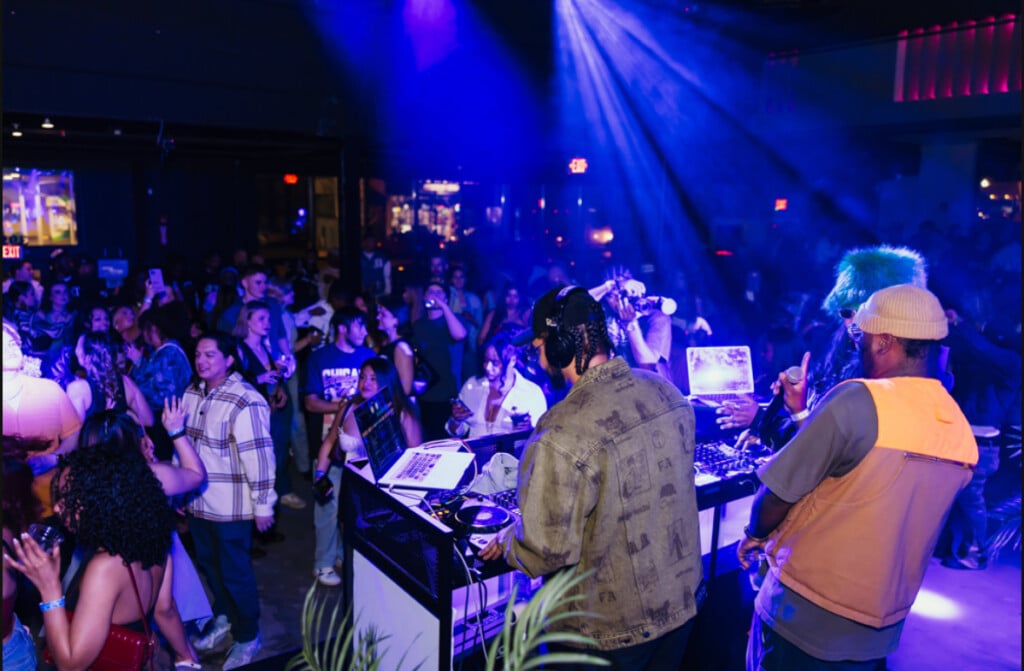Artist Megh Knappenberger unveils permanent installation at KU Welcome Center
11 new works from the artist explore Jayhawk history and lay the groundwork for student futures.
The Jayhawk Welcome Center at the University of Kansas gains 11 new additions with the unveiling of Megh Knappenberger’s permanent installation, titled Origin Stories.
Knappenberger is not new to KU. As an alumni herself, she has spent years here as a student, and now a featured artist with a huge contribution to the future foundation of Kansas’ history. In 2016, she was awarded licensing rights to depict the KU Jayhawk, one of the only artists ever granted this achievement. So when the Jayhawk Welcome Center [1266 Oread Ave. in Lawrence] finished construction, her name was among the first suggested to contract in lining the walls with original decor.
The Origin Stories installation at the Welcome Center highlights the nature that surrounds KU and its rich history, as the artist’s output from working with peers and the community to represent the heart of the school.
“I believe that doing research not only gives the work gravity, but helps to tell a story, and when the work can tell a story, that’s how it becomes a two way experience between me and you, or the work and the viewer,” Knappenberger says.
From highlighting the debated history of the Jayhawk to creating a geological map of Kansas, these bright abstract pieces tell the story of what was once a single building surrounded by tall grass prairie atop Mount Orient.
“The building is meant to really shows you what it would be like to be a student at KU, and what your future may hold if you become a student there. Because it’s so forward thinking, I wanted to look backwards and really look into those first days and those origin stories of KU.”
Her piece titled Herbarium is inspired by KU’s first student newspaper from 1874, The Observer of Nature. The newspaper earned its name from schools requirement of each student to go out into the tall grass plains and create a shadow box of 40 different native insects and plants. Knappenberger created her own 14 piece herbarium on the canvas, even including homemade ink made from the walnuts picked from university’s walnut grove.
Big Blue Stem Grass not only references the grass past students trekked through decades ago, but how the plants deep roots represent the schools history.
“When KU was founded, the tall grass prairie was seen as kind of a barren landscape, without much diversity,” Knappenberger says. “At the time, they wanted to come in and beautify it, by planting trees and to sort of bring it to life. But what we know now is that tall grass prairie is very, very diverse. There’s a lot of different colors of wildflowers, different shapes, as well as different butterflies, moths, insects, small mammals that depend upon that ecosystem. I want this piece to represent that natural diversity, and the deep roots KU has here.”
Lawrence Layer Cake is an abstract piece that details the geography and natural composition of Lawrence. Free flowing lines separate different materials that cover the surface, while white horizontal lines split the piece into the flat geographical layers, also known as layer cake geology, that make up Kansas. If you look closely at the center of the piece, a small curved line labeled “Jayhawk Blvd.” shows the viewer where they are in the middle of it all.
“It’s interesting to see all of the different materials geologically speaking, that are under underfoot on Mount Orient,” says Knappenberger. “The limestone of course, because the Rock Chalk Chant is in reference the limestone that is all throughout Kansas. It’s the literal bedrock of the state.”
A series of five paintings depicting a blue jay, red tailed hawk, sparrow hawk, peregrine falcon, and cooper’s hawk reference the debated history of the schools mythical mascot, the Jayhawk. Knappenberger leaves the origin of the name up to the viewer to decide, but represents the stories that have been passed down over the years.
“I worked with an ornithologist to help to narrow down what bird type was most most likely being referred to in those stories when it wasn’t referred to by name,” says Knappenberger. “The stories begin in 1849, and span until the 20s. I love these paintings because it leaves it still up for debate. We don’t have a clear answer, as history often doesn’t let us have a clear answer.”
Origin Stories is now available for viewing by the public at The University of Kansas Jayhawk Welcome Center. Find Megh Knappenberger’s work on her website and Instagram.







